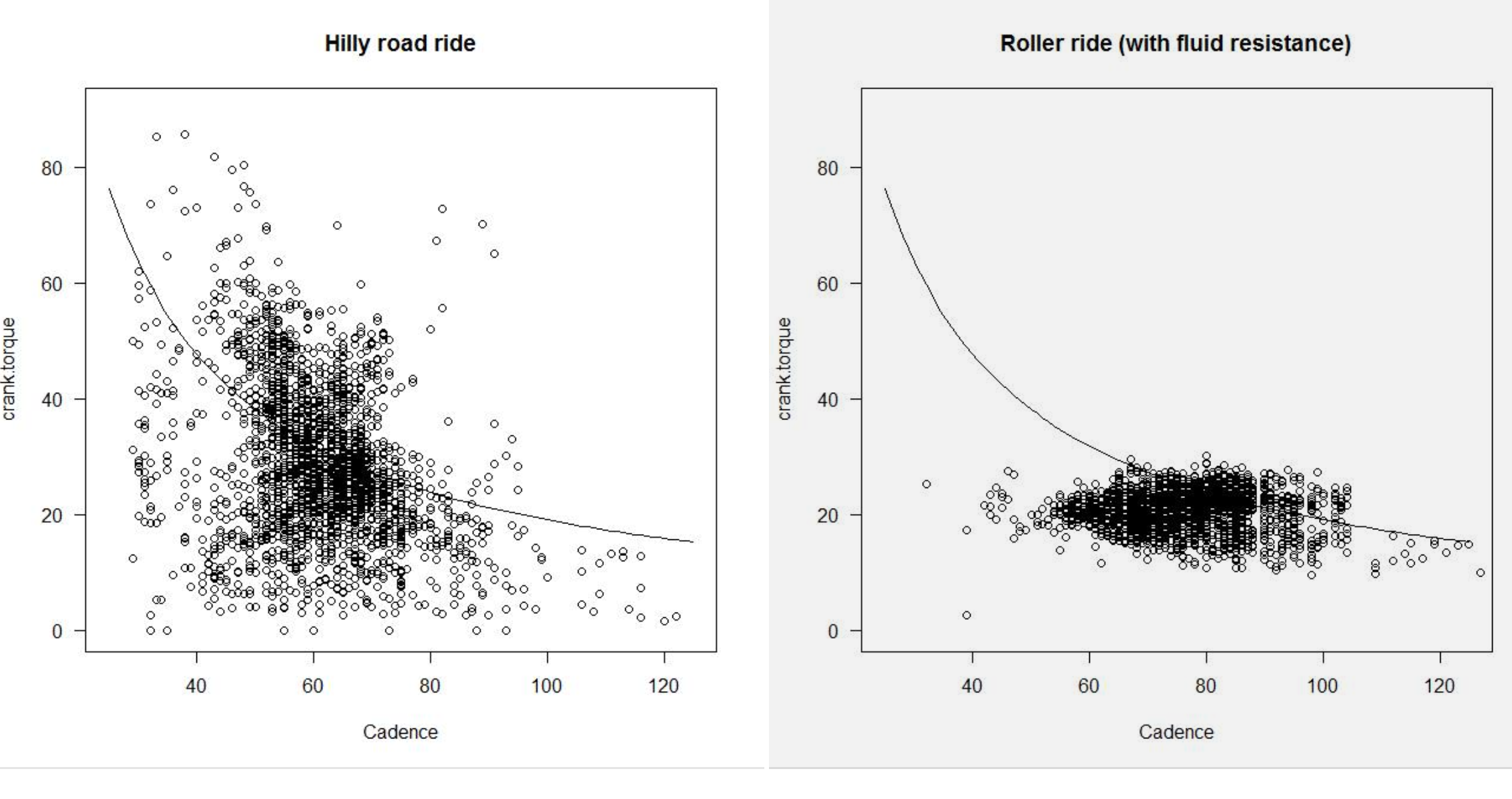codygo wrote:
Tom A. wrote:
codygo wrote:
This ain’t the traditional question about efficiencies. I’m interested in how rider mass and bike fit might influence self-selected pedaling torque.
What is your mass in kg?
Where is your center of mass (call it belly button) w.r.t the bottom bracket?
What is your preferred pedaling torque at 0.7/1/1.2 FTP?
If you don’t have pedaling torque but have power data, report: 9.55x(Power) / (cadence)
I’ll have to estimate/measure my CoM, but my preferred torque tends towards 30/35/40 Nm or 0.31/0.41/0.47 Nm/kg at 85kg.
I'm thinking you might want to resolve this down to pedal force...
I’m always DFMD (Down For More Data) At some point it becomes a request for all the things lol.
I said torque because I view it as a field on my cycling computer and find it more consistent than cadence or power.
I was trying to avoid people posting their preferred cadence, but two of three (power, torque cadence) is enough to guess the other.
If you have crank length, then dividing torque by ((crank length)*1m/(1000mm)) will give is pedal force in Newtons.
I’ve always been curious about how pedaling forces affect bike fit. One can TT with a neutral core and resting on arm pads, to almost no weight on arm pads with tension through core muscles, or set up to be pulling on aerobars with deliberate core engagement for shorter efforts. I think these “dynamics” are much more important than the traditionally discussed “geometric” fit variables, but I think they relate more to W/kg and goals in a manner that we don’t seem to have the data to discuss or elaborate on.
Right...but the way I look at it, your body doesn't perceive "torque", it perceives the FORCE you're putting into the pedal...which is why I find "quadrant analysis" and looking at AEPF/AEPV (Average Effective Pedal Force/Average Effective Pedal Velocity) as being more insightful than torque or cadence. So, if you're asking for torque, you really need to know crank length to be able to put it into context.
Plus, it's an easy to access chart in GoldenCheetah ;-)
For an example of of how it can be used to compare efforts and setups:
http://bikeblather.blogspot.com/...erwithin-reason.html (edit: and note that the reported torques would be vastly different for those 2 setups)
http://bikeblather.blogspot.com/

